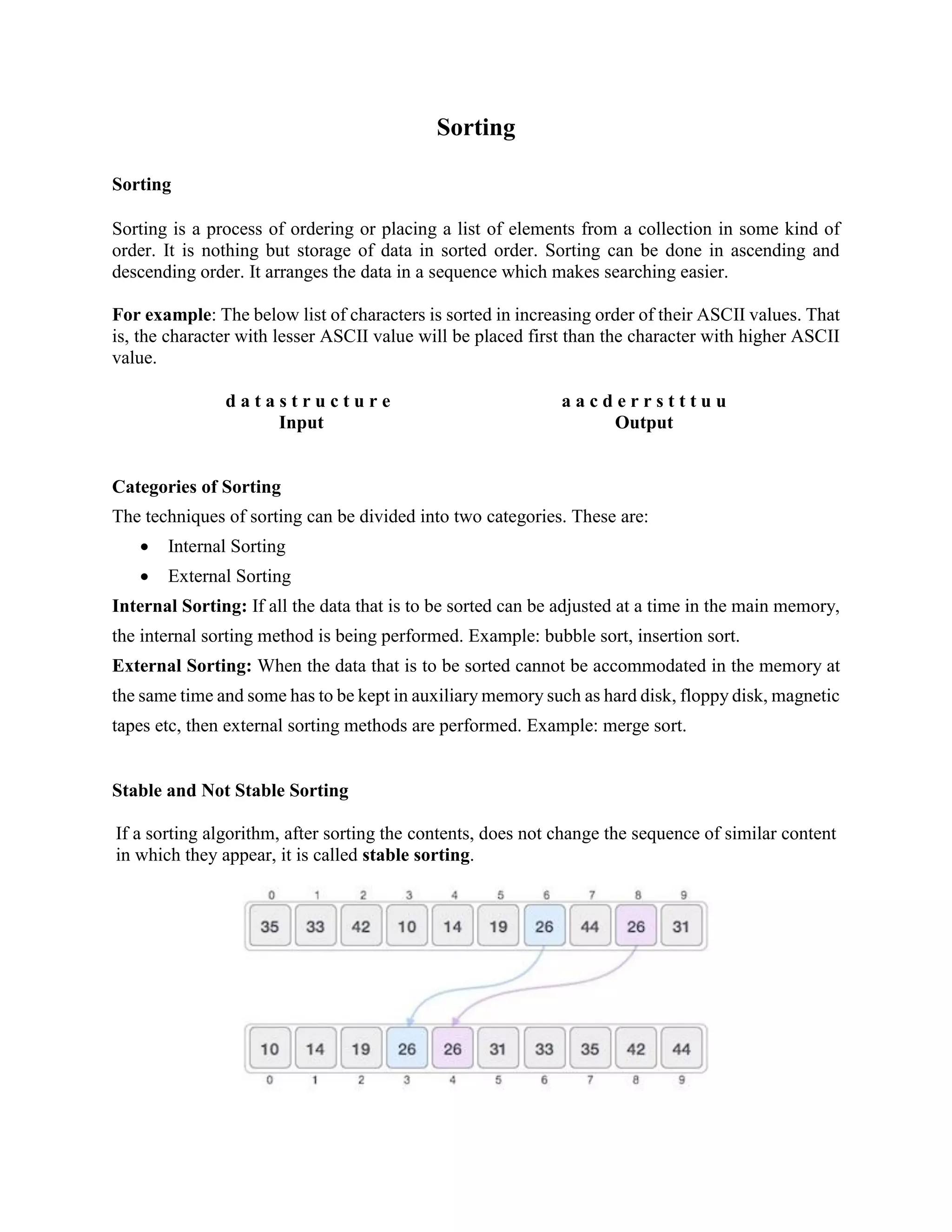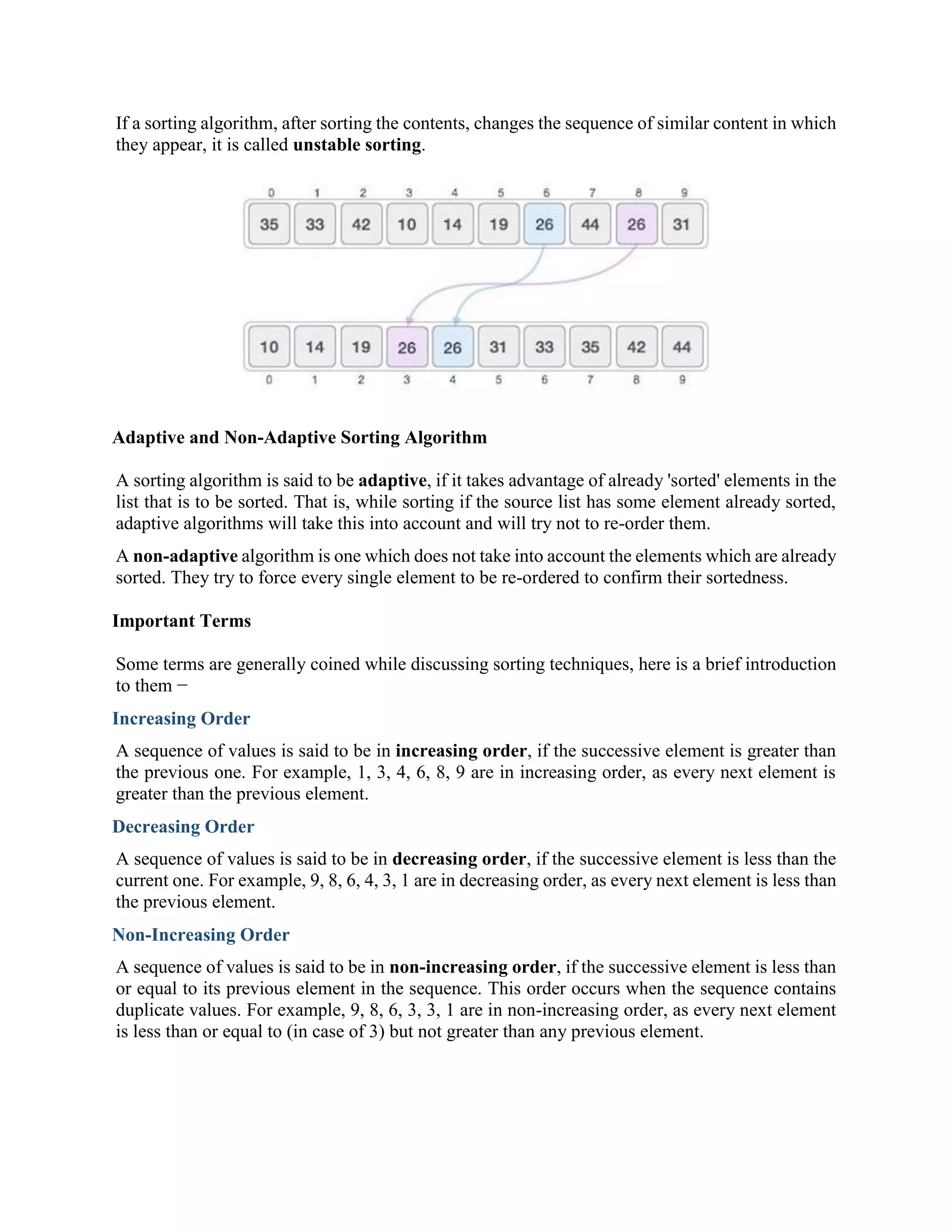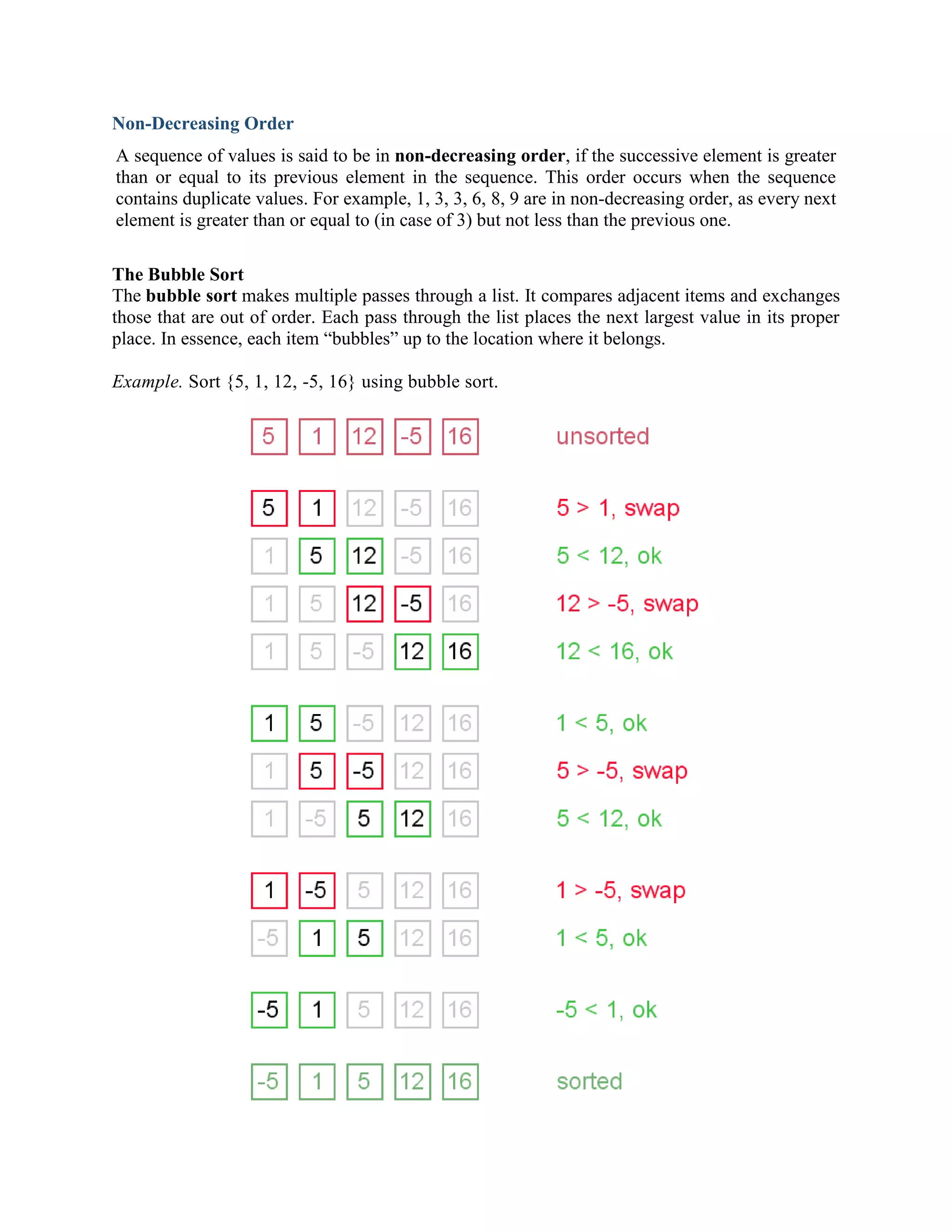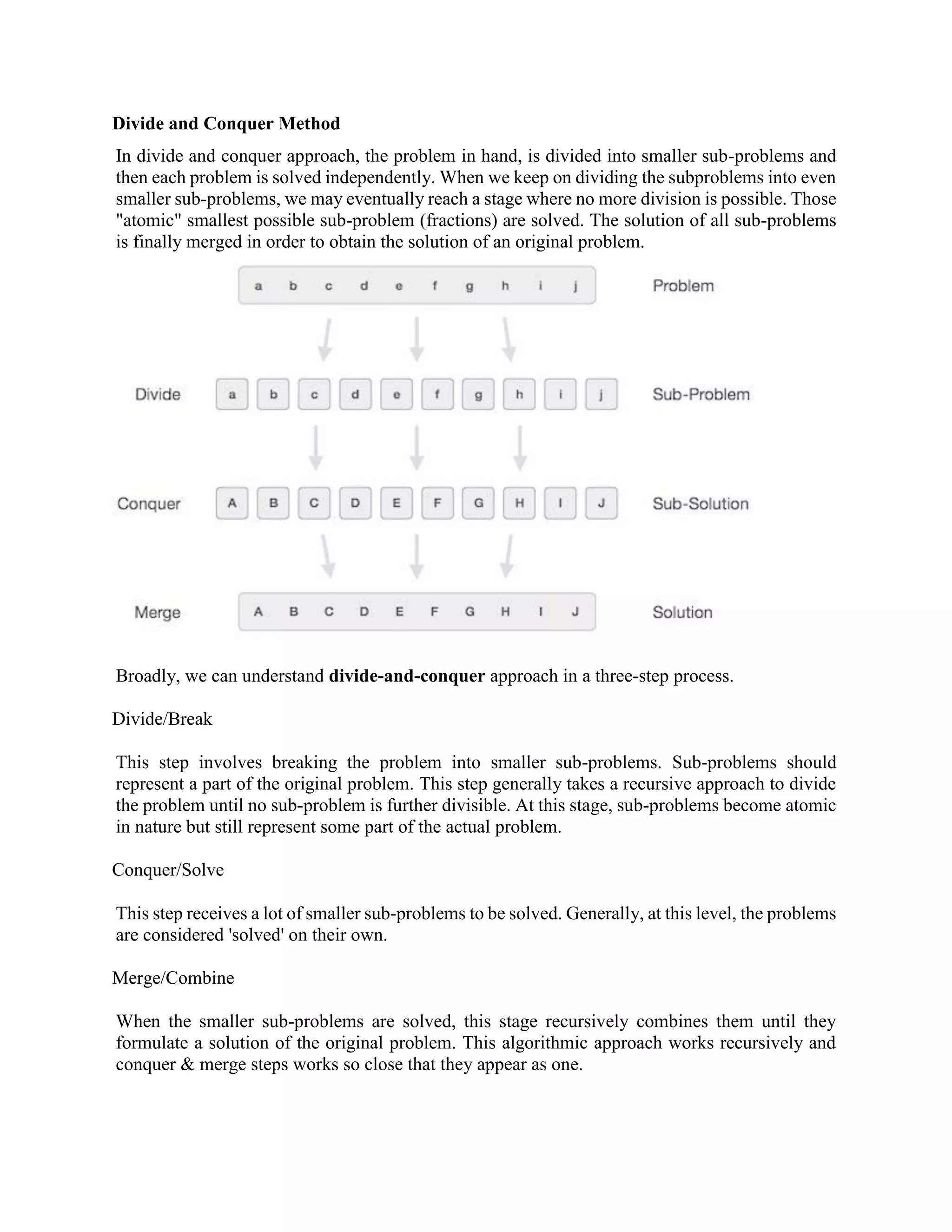Sorting is a process of ordering data elements in a sequence according to some criteria. There are two main categories of sorting: internal sorting, where all the data fits in memory, and external sorting, where some data must be stored externally like on a hard disk. Sorting algorithms can also be classified as stable or unstable based on whether they preserve the original order of equal elements. Some common sorting algorithms are bubble sort, selection sort, and insertion sort. The divide and conquer method breaks problems down into smaller sub-problems, solves those independently, and then combines the solutions.



![Table 1: Comparisons for Each Pass of Bubble Sort
Pass Comparisons
1 n−1
2 n−2
3 n−3
… …
n−1 1
Algorithm for bubble sort
1. Input array A[1….n]
2. for (i = 0; i<= n – 1; i++)
{
for (j= 0; j<=n - i – 1; j++)
{
if (A[j] > A[j+1]) {
temp = A[j];
A[j] = A[j+1];
A[j+1] = temp;
}
}
}
3. Output: Sorted list
The Selection Sort
In this method, at first we select the smallest data of the list. After selecting, we place the smallest
data in the first position and the data in first position is placed in the position where the smallest
data was. After that we consider the list except the data in the first position. Again we select the
(second) smallest data from the list and place it in the second position of the list and place the data
in the in the second position, in the position where the second smallest data was. By repeating the
process, we can sort the whole list.
Example. Sort {5, 1, 12, -5, 16, 2, 12, 14} using selection sort.](https://image.slidesharecdn.com/lecture-sorting-210706144742/75/Sorting-4-2048.jpg)
![Algorithm for selection sort
1. Input array A[1…..n]
2. for(i=1; i<=n-1; i++)
{
small_index=i;
for(j=i+1; j<=n; j++)
{
if(A[j] < A[small_index])
small_index=j;
}
temp=A[i];
A[i]=A[small_index];
A[small_index]=temp;
}
3. Output: Sorted list](https://image.slidesharecdn.com/lecture-sorting-210706144742/75/Sorting-5-2048.jpg)
![The Insertion Sort
It always maintains a sorted sublist in the lower positions of the list. Each new item is then
“inserted” back into the previous sublist such that the sorted sublist is one item larger. Figure
shows the insertion sorting process. The shaded items represent the ordered sublists as the
algorithm makes each pass. We can derive simple steps by which we can achieve insertion sort.
Algorithm for insertion sort
1. Input array A[1….n]
2. for (i = 1 ; i <= n - 1; i++) {
j = i;
while ( j > 0 && a[j-1] > a[j]) {
temp = a[j];
a[j] = a[j-1];
a[j-1] = temp;
j--;
}
}
3. Output: Sorted list.](https://image.slidesharecdn.com/lecture-sorting-210706144742/75/Sorting-6-2048.jpg)
